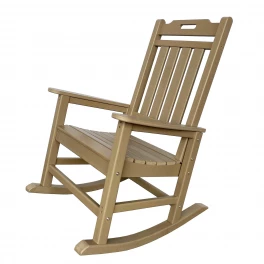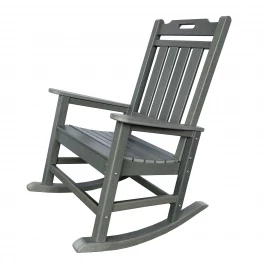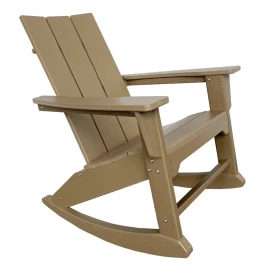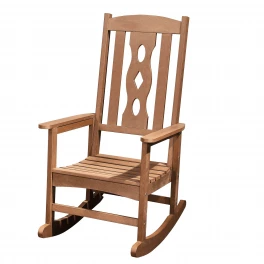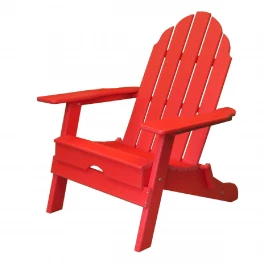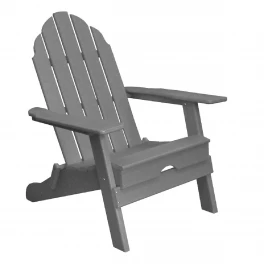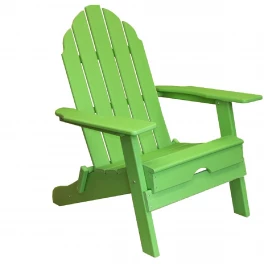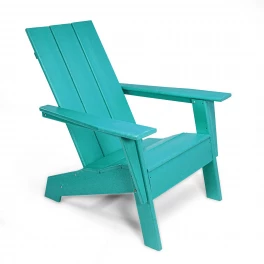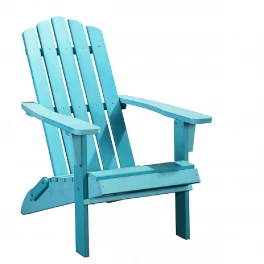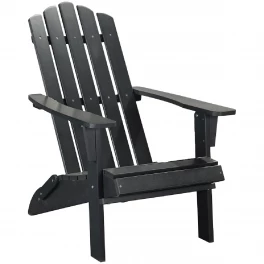Essentially, anything can displace the sanctity of your home, damage can come from unrelated sources or unexpected events. Although there are many forms of disturbances that can unravel the very fabric of your domestic life, keeping a safeguard and contingency plan prepared will help you in easing that transition back to normalcy.
One such contingency to think about is fire damage. Whatever damage you’re facing, whether it’s a small issue or a large concern, there is quite a bit of knowledge you should retain. As a homeowner, there is quite a sum of materials that you need to provide yourself with before you can begin the process of rebuilding.
There are differentiating costs to the products you’re searching for, in case another incident were to arise. But the estimate and overall average range to fire restoration costs will probably between $2900 to $40000. As the lower lump sum, if you’re a homeowner with a single-family property, the cost will round out to about $2500. If you’re a homeowner with a larger property, you should expect to spend about $128110, depending on the provided services.
Table of Contents
- Costs into the Provided Services
- Most Common Areas of Fire Damage & Associated Cost Range
- Process of Fire Prevention & Associated Costs
- Expected Costs By Classification of Fire
- Insurance Costs
- Costs of Rebuilding Your Home After Fire
- Average Cost of Restoration By House Size
- Measurement of Time to Watch Out for A Fire To Burn
Costs into the Provided Services
Before you tackle any of your prevention planning, you should look into hiring a fire damage restoration company. The contractor or professional they decide to send over to handle your troubles will most likely charge at an estimate of about $65 to $90 per hour. A flat rate will most likely range about $6000 to $20000.
Repair Costs for Water Complications
So there are quite a few services that need to be finished if you’re facing these specific issues. One problem that homeowners do not expect nor think about is all of the water damage that occurs from the fire hoses or sprinklers that fought off the initial fire. Prices will average between $1000 to $6000, according to the extent of damage that resulted in your home.
The main reason as to why homeowners need to repair any water damage that may obstruct the structural integrity of their property is the vulnerability that space has to mold. Other than the water being your key indicator of damage, you could be facing chemical exposure and damage as well. A licensed professional will understand and know just what to do in a situation that involves both scenarios.
Repair Costs for Chemical Complications
Separately, chemical damage and contamination will result in expenses calculating to about $600 to $2500. Although fire extinguishers and fire-cancelling chemicals are an effective solution, the complication that they bring is the residue left on surfaces.
Repair Costs for Smoke Complications or Deodorizing Restoration
One method that a fire damage contractor will use is ozone treatment, especially in the case of toxic chemicals. This occasion is used when a certain smell after a fire affects the smell of your materials, especially fabrics. Ranging between $200 to $600, this solution will most likely require many different sets of equipment.
The other treatment method that contractors will use is thermal fogging, this involves the use of disinfectant solution being suspended in the air for a period of time. Costs for this method will range between $250 to $550 per floor. Unlike the ozone treatment method, the thermal fogging method is the erasure of odors in harder-to-reach areas.
Repair Costs for Soot Complications
Professionals in this industry will have specific materials to use in the case of soot damage. By using a specialized film, they can actually eradicate soot particles. Typically, the range you’d be looking at will be about $400 to $1700, the tasks will include cleaning and deodorizing air ducts.
Suffice to say, soot is a noxious material, if it is coated onto any material in your home, it will make your living conditions horrendous as a result. Containing acid and chemicals, possibly even containing soils, metals, and dust, soot needs to be one of the first few things you should watch out for and repair immediately.
There are two ranges of costs that homeowners will ordinarily concern themselves with, the cost of cleaning oily soot and the cost of cleaning dry soot. Both costs will vary since oily soot can be originated from grease fires, which will require more of an effort.
The cost of cleanup may estimate into the thousands, based on the scope of the soot damage. Dry soot will range between $400 to $700. Since this kind of damage rarely smears like its oily counterpart, it is less expensive to clean up.
Repair Costs for Structural Complications
An average structural repair costs will range from $15000 to $25000 per room. This includes jobs in wood replacement, sheetrock insulation and replacement insulation. Essentially, if the state of your home’s structural integrity is compromised, then you’ll probably have to pay for the necessary renovations. In some cases, structural repairs will include the cost of demolition due to the dangers that can preclude.
Often, the repairs for structural integrity will be your last priority. Due to the necessity of ensuring your home’s safety, you need to consider all the harm that can be done without accomplishing the other responsibilities at hand.
Photo by Chris Karidis on Unsplash
Most Common Areas of Fire Damage & Associated Cost Range
A fire that has spread within your home without the assistance of sprinklers has cost the affected homeowners with an average cost of around $45000. Homes with sprinkler systems installed usually only spend about $2000 in comparison because of the preventative measures they have considered when buying and owning their homes.
It is quite the shock to think about when you can take a look at the differentiating costs between the two homes. Instances such as brief and contained fires can only cost a few hundreds of dollars but in a worst case scenario, where a wildfire spreads in high-costing residential areas, the repair costs can accost afflicted victims with more than a million dollars.
These numbers can also be associated differently with the expanse of damage that reaches the rooms in your home. If only one of your rooms was afflicted with fire damage, then you should expect to spend only the lower end of the range of costs. However, if the range of the damage has exceeded and the rate of destruction has extended to the majority of your property, you may have more to replace than to simply repair.
On average, the range of fixing your upscale kitchen will probably estimate between $50000 to $70000. This is because of all the custom cabinetry you may have had to replace or the countertops you had just installed before the fire occurred. Most often, the leading cause to a fire starting and spreading throughout your home is from negligence and inattentiveness.
Reported fires throughout the country have calculated that 27 percent of fire-related incidents occur in the home. Around 44 percent of the statistic above accounts for kitchen fires that begin from unattended cooking activities.
Process of Fire Prevention & Associated Costs
It’s unfortunate but there is no way to completely eliminate the chances of a fire incident from ever occurring again. Some things to keep in mind to at least lower the repair costs should another fire start and spread is the installation of a sprinkler system. As mentioned above, a home with a sprinkler had a lower estimate than a home without one.
On average, you should expect to spend about $1.35 per square foot and can even cost about $7 per square foot, if you’re thinking of installing the sprinkler system in an already built home. About 74 percent of homeowners have stated that they’re more likely to buy a home with an in-home fire sprinkler system. So in terms of home value, these acquired installations could increase the appraisal.
Something that should be inherently a part of your home is a home fire extinguisher. The chances of elevating fire safety is to simply purchase this very convenient, yet common item. A home fire extinguisher can range anywhere from $35 to $100. Remind yourself that size does not matter in this particular situation.
Fire hazards come in all sorts of hazardous levels. Approximately, there are about six main kinds of extinguishers that are in your realm of possible purchases. Depending on the kind of situation you might be facing, the extinguisher you’ll need will have to be in your proximity.
The standard fire extinguisher that homeowners decide to keep in their homes is called the ABC extinguisher. Although there isn’t a ‘one size fits all’ extinguisher that rids all classes of fires, this is the closest amalgamation to that sentiment. The most common scenarios of fire-related events will be classified by the first three: A, B, and C. Luckily the standard extinguisher was specifically designed, exactly for the use of extinguishing fires in a home.
Smoke detectors also provide a small measure of security against fire-related accidents and incidents. Interestingly, there are actually five million homes that don’t have smoke detectors installed in them. If you’re a homeowner who does not feel the need to purchase an alarm system, you need to realize how effective those alarms are for the safety of your homes. In fact, smoke detectors have been proven to lower the risk of fire-related deaths by 55 percent.
The cost range of installing a smoke detector in one room of your home is estimated to be about $70 to $150. If you want to take the measure a step further, you can install a dual hardwired detector which will probably cost around $112. To install an even more complex detector will range between $650 to $950. With a better reaction time and the right kind of preparation for a fire, you’ll have a better chance of preventing any major damage from actually occurring.
Expected Costs By Classification of Fire
As previously mentioned, the class of fire extinguisher that you’ll most likely want to purchase for your kitchen will be a Class B. While mostly every fire-related incident will cause the same effects in almost every home, the reason for that cause can be very different. Although you can just purchase an ABC extinguisher, if you want to add an extra protective juncture, you can purchase extinguishers according to the classification of fires that occur most often.
Class A, unfortunately, is not just happenstance, and in fact, it is considered the most common cause of fires to occur. The most interconnected reason behind Class A fires is due to the overage of combustible materials, i.e., wood, paper and plastic. What is most frequent to incur will be trash fires. For a Class A fire, you should keep a Class A extinguisher near either your garage, or an area close to where you leave your trash cans.
Class B fires will most likely happen from flammable gases, like butane, propane, kersones, even certain paints. If a Class B fire were to happen, the best area for a Class B extinguisher will most likely either be in the kitchen or in your shed, in case a fire happens with a backyard barbeque or party.
The Class C-related fires will occur with unfortunate events involving electrical outlets. This is heavily influenced by the amount of motors, appliances, and transformers are nearby. In the case of a Class C fire, you should position a Class C extinguisher either in your garage or basement. Anywhere with a large amount of electrical outlets, electrical devices, anything flammable in regards to an electric source of flammability.
Fires that can be classified with Class D incidents will stem from mainly metals. The metals that have the most chances of having fires happening will include titanium, magnesium, aluminum, and potassium. This kind of fire will in all likelihood happen in laboratories so you won’t have to worry about this classification unless you have a personal lab in your home.
A Class K fire incident will most probably happen inside the kitchen, where grease, cooking oils, vegetable fats, any kitchen-involving, flammable liquid resides. This class of fire is most disconcerting for restaurants and food service areas because the extent of this fire is considered far more dangerous and destructive than the others.
Fire Classifications Expected Cleanup Cost
| Class A | $3.20 - $5.20 per sq ft. |
| Class B | $4.80 - $7.20 per sq ft. |
| Class C | $4 - $8 per sq ft. |
| Class D | $6 - $10 per sq ft |
| Class K | $4.40 - $6.40 per sq ft. |
Insurance Costs
Besides the task of amassing estimates with contractors and fire repair specialists, you’ll most likely have to find estimates from different insurance companies. This is probably the most stressful process that you’ll have to deal with but you’ll eventually have to file a claim for fire damage. If you already have homeowner’s insurance, you’ll, in all likelihood, be covered.
The insurance company you opt into contracting will compensate you accordingly. If you do take the appropriate steps into filing a claim and if your home is forsaken by such a disastrous event, keep in mind what you should do with the aftermath. Such is the case with most catastrophes, you’ll need to contact an agent to bring you the right amount of compensation and ensure that the company knows where you are currently residing.
By listing all of the objects or costs that are impeding your judgement, you can find the correct reparations to the things you’ve lost. The most important thing to remember is to keep all those things and to not just throw them away. This is to ensure proof that you never lost your items when an insurance adjuster comes by and inspects which objects require recompensation.
Time is of the essence when filing a claim with an insurance company. By filing your claim and by constantly updating your notifications will ensure that your process is put on top of the inquiries. Make sure to keep all your updates and assemble the date of loss, type of loss, anything that will be pivotal to the insurance claim, this includes a police report.
Most importantly, gather all the necessary receipts and documentation. This means all the paperwork that will entitle you to the correct and accurate amount that you deserve. One very key reminder to look out for is paying your premiums. There are quite a few homeowners that decide to discontinue the payment of their insurance premiums. However, this is a common error that will disable your coverage.
It’s an overlooked reason that unfolds and produces even worse situations. This is especially the case because there is plausibility in your liability protection. To enforce the full amount of your coverage, informing your insurance company of where you’re staying is truly of the utmost importance. A piece of advice is to hire a public adjuster. Other than hiring a contractor or professional to help fix your home, you should consider hiring a public adjuster to make sure that you receive the most out of your claim.
Costs of Rebuilding Your Home After Fire
After the disaster that you just survived, the cost of having to start from day one, having to completely rebuild your property will be quite costly. Depending on the extent of damage, your home may seem, unfortunately, quite irrevocable when looking at the costs. However, if there are items or areas of the home that are salvageable, contractors or professionals will charge about $50 per sq ft.
The reason why insurance is such a requirement when buying and owning a home is precisely the purpose of having to rebuild everything from the ground up. In the worst case scenario, you may expect the expense of your reassembly to cost all the way up to $250000.
It’s quite rare for an inspection to be appointed in-person, this is why it is mentioned above that you’ll have to keep everything that was lost on a list. An inspection usually involves estimates made by an agent by calculating your findings. Keep in mind that if you do the estimate yourself, you’ll be able to fix any of the replacement compensation, and ensure that none of those calculations are incorrect.
Essentially, you can correlate the cost of rebuilding with the cost of building a whole new home. If you were to build an entirely new home, contractors would probably charge you with an average range of about $13000 to $400000. In many instances, the cost of rebuilding will seem entirely the same.
Thankfully, there are cases with smaller fires that don’t cause as much damage as the cases above. Homeowners, at very minimal cost, may only have to spend about $2500. But the average range in these cases will ostensibly estimate about $3000 to $40000. When it comes to the size of the fire, there is also the factor in the size of your home.
Average Cost of Restoration By House Size
Your bill is reflected on the types of damage that need to be salvaged and repaired. Unlike certain professionals, fire restoration companies will probably charge you between $4 and $6.50 per square feet.
| 1000 sq ft. | $6500 |
| 1750 sq ft. | $8750 |
| 2000 sq ft. | $12000 |
| 2500 sq ft. | $13500 |
| 3000 sq ft. | $15000 |
| 4000 sq ft. | $20000 |
In the case of a fire starting in your property, you should proceed in finding out what your emergency solution is. There are quite a few tips to follow. Always inform and situate your household members to know the two escape routes from every room of the house and the rendezvous points where those members are going to meet. Like every family emergency that occurs, communication is a pivotal role that needs to be addressed in the case of even the smallest emergencies.
Measurement of Time to Watch Out for A Fire To Burn
At a minimum, about 350,000 home fires happen every year. Statistics show that more Americans are actually killed in fires than the estimates of every natural disaster combined. In just a matter of a few minutes, a tiny spark, like a powderkeg, can transmute into a scorching blaze. By knowing ahead of time the duration homeowners have to react against the spreading fire from burning your whole house down, you’ll be minimizing your restoration costs immediately.
30 Seconds In
As previously stated, the kitchen is most often where the fire starts. The point of origin will most likely be either from grease residue or toxic gases. If the fire is left unchecked, this is when the dismay will escalate. Maybe it was the middle of the night and you were asleep, maybe you had to help someone and forgot about what you’re cooking, about 30 seconds later, the fire catches onto the other materials in your kitchen.
If you’re confronting a fire after 30 seconds, and if the fire began from a pot or pan, do not throw water into it. Water exacerbates grease fires so blocking out oxygen will cease the fire from growing any further. Either find a lid to cover the pot or pan, or find something that isn’t easily flammable and try to create a sort of veil.
One Minute In
After about a minute passes by, the fire will elevate in heat and the more flammable objects will ignite. Inevitably, all the wooden materials around the kitchen will inextricably burn. Then once the flames spread onto any curtains, that is when the burning and poisonous gases begin to spread throughout the air. Remember, breathing the smoke will be quite painful, even just two gasps will make you black out.
Two Minutes In
This is the duration of the fire when the intensity becomes almost uncontrollable, so this is when you should do all you can to get out of the home. The temperature will be about 190 degrees F, and the smoke will release more toxins into the air. This is the point of the fire when the spreading will get to the hallways around your home and the air will be so hot it’ll be even more difficult to breathe.
Three Minutes In
The temperature is now about 400 degrees F, high enough to kill the people around the vicinity. What looks like a cloud of smoke will touch around item after item, burning everything it touches. Autoignition will cause everything to spontaneously immolate.
Four Minutes In
This is the point of no return, so to speak. At this point in time, you should already either be outside meeting your household members or finding the prepared exit strategy. The temperature will have reached about 1400 degrees F, and the risk levels are at its highest. Traveling rapidly around your home, vertically and horizontally throughout your home, the fire is at the most dangerous stage.
Five Minutes In
Now at this phase of the fire, all anyone can do is wait as the fire dies down. This is when the flames are now dying down but it is practically the longest stage. Your home is now entirely at the hands of the firefighters, at this point you should now just be waiting everything out.

Finding A Professional On House Tipster
In any situation, whether it's a simple remodeling project or if you need a contractor to help you rebuild your home after a fire-related incident, you can find specialists through House Tipster. You have enough on your plate to deal with, especially with the woes of a fire burning down your home. Rather than spending your time worrying about which professional to hire, you should be spending time worrying about your insurance claim and the compensation that your insurance company should provide. With all our features ready for you, you won't have as many headaches and concern yourself with that tedious search. Use House Tipster for all your home improvement or repair needs.
Featured Image by Dave Hoefler on Unsplash





